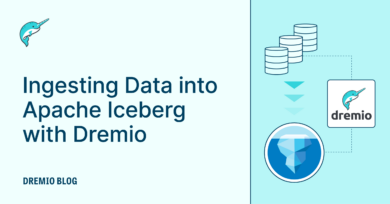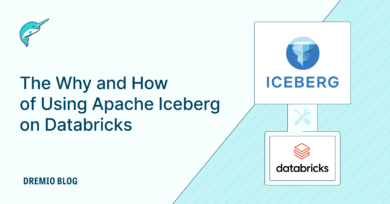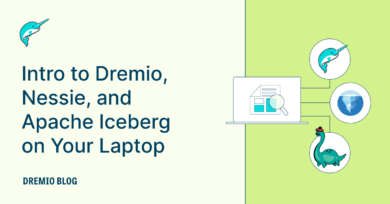8 minute read · June 11, 2025
Why Companies Are Migrating from Redshift to Dremio
· Principal Product Marketing Manager

Companies today are under constant pressure to deliver faster insights, support advanced analytics, and enable AI-driven innovation. Many organizations chose Amazon Redshift as their cloud data warehouse. However, as data volumes grow and workloads change, Redshift’s legacy warehouse architecture is not meeting their needs—driving many organizations to consider alternatives.
Dremio’s intelligent lakehouse platform: a modern, open, and flexible solution is becoming the preferred destination for companies looking for an alternative to Redshift. Let’s look at why many organizations are making the move—and how Dremio is enabling them to modernize and optimize their analytical environments.
The Shift from Warehouses to Lakehouses
Traditional data warehouses like Redshift were designed for structured data, fixed schemas, and predictable BI workloads. They required complex ETL pipelines to ingest data, resulting in silos, duplication, and rising operational costs. In most cases, warehouses or data marts have initially met many organizations' analytical needs. Now as analytical requirements have evolved, especially in the AI era, they are increasingly unable to handle the scale, variety, and agility demanded by today’s data-driven enterprises.
Modern organizations need more. They need the openness and flexibility of a data lake combined with the governance, manageability, and performance of a data warehouse—while eliminating silos and supporting both structured and semi-structured data at scale.. Enter the lakehouse architecture, which combines the best of both worlds:
- Unified Data Access: Analyze data directly in cloud object stores like S3 and ADLS without moving or duplicating it.
- Open Standards: Leverage formats like Apache Iceberg, ensuring interoperability with other engines and avoiding vendor lock-in.
- Elastic Scalability: Pay-as-you-go compute that scales to zero when idle, avoiding the high costs of always-on clusters.
- AI and Advanced Analytics: Support of advanced analytics use cases, making lakehouses ideal for AI/ML workloads.
- Real-Time Insights: With no need for data duplication and ETL pipelines, lakehouses enable faster time-to-insight by querying data directly from object storage.
Dremio was built from the ground up to embrace this modern lakehouse paradigm—helping organizations break free from Redshift’s limitations and innovate faster.
Where Redshift Falls Short
As data volumes grow and workloads become more complex, Redshift’s legacy architecture has exposed several critical pain points:
- Poor Performance at Scale: Redshift struggles to deliver consistent performance on large datasets, high concurrency workloads, and complex queries. Users often report slow query response times and bottlenecks as usage increases—limiting the ability to democratize data access and support real-time analytics.
- Heavy ETL Pipelines: Redshift requires data to be copied into its clusters, creating complex and costly data pipelines that slow innovation.
- Always-On Pricing: Redshift’s always-on compute model means customers pay even when no one is querying—leading to unexpected and often significant costs.
- Manual Performance Tuning: Achieving acceptable performance at scale requires constant management of sort keys, distribution keys, and vacuuming jobs—consuming valuable engineering time.
- Proprietary Lock-In: Redshift’s proprietary table formats and tight AWS integration limit interoperability and create vendor lock-in—making it difficult to adopt new tools or architecture
These limitations have left many organizations frustrated and looking for a modern alternative.
Why Companies Are Choosing Dremio
Dremio’s Intelligent Lakehouse Platform addresses these challenges —helping organizations modernize their data architecture while accelerating time-to-insight and reducing costs. Here’s how:
Lightning-Fast Performance with Reflections
Dremio’s Autonomous Reflections automatically accelerate queries across all workloads, delivering sub-second performance on large and complex datasets. Unlike Redshift’s manual materialized views, Reflections require no ongoing maintenance and integrate seamlessly with BI tools.
Flexible, Open Architecture
Dremio delivers high-performance queries directly on cloud object stores like S3 and ADLS—no heavy ETL pipelines or data duplication required. With open standards like Apache Iceberg and the Iceberg REST Catalog, Dremio ensures that your data is portable, interoperable, and future-proof.
Lower Total Cost of Ownership
With pay-as-you-go elastic engines that scale to zero when idle, Dremio avoids the hidden costs of always-on compute. Customers report up to 40% lower TCO compared to Redshift, thanks to reduced infrastructure spend and simplified operations.
AI-Ready Data Products and the MCP Server
Dremio’s AI-Ready Data Products empower data teams to curate, publish, and share high-quality, governed datasets—accelerating both Analytic and AI/ML initiatives. The MCP Server (Model Context Protocol) bridges Dremio with AI agents and LLMs, making natural language the interface to enterprise data while maintaining robust security controls.
Unified Self-Service Experience
Dremio’s semantic layer unifies data from lakes, warehouses, and databases, simplifying data discovery and exploration. With native connectors for Tableau, Power BI, and Looker, users can seamlessly integrate Dremio into existing BI workflows.
Robust DataOps and Governance
Dremio’s Enterprise Iceberg Catalog provides advanced table management, versioning, and optimization for Iceberg tables. Features like automatic table optimization, data compaction, and governance capabilities enable teams to easily optimize and manage their analytical environment, This provides companies the ability to drive analytical efficiently—without the manual overhead that Redshift requires.
Conclusion
As data grows and workloads rapidly change, more organizations are leaving Redshift behind in favor of Dremio’s Intelligent Lakehouse Platform. With its open, flexible architecture; lightning-fast performance; AI readiness; and lower TCO, Dremio enables data teams to innovate faster and future-proof their analytical environments.
Ready to explore why companies are making the move from Redshift to Dremio? Let’s set up a meeting.
Sign up for AI Ready Data content


